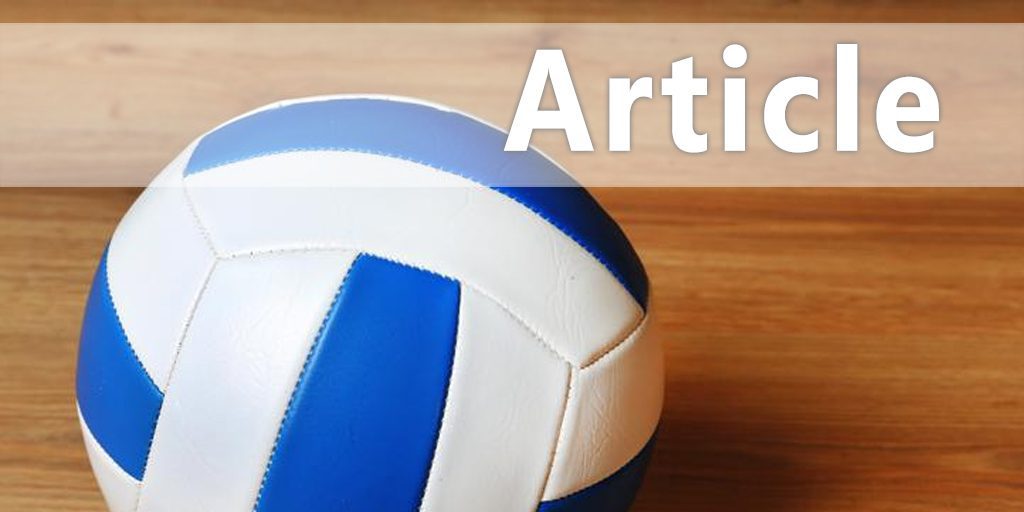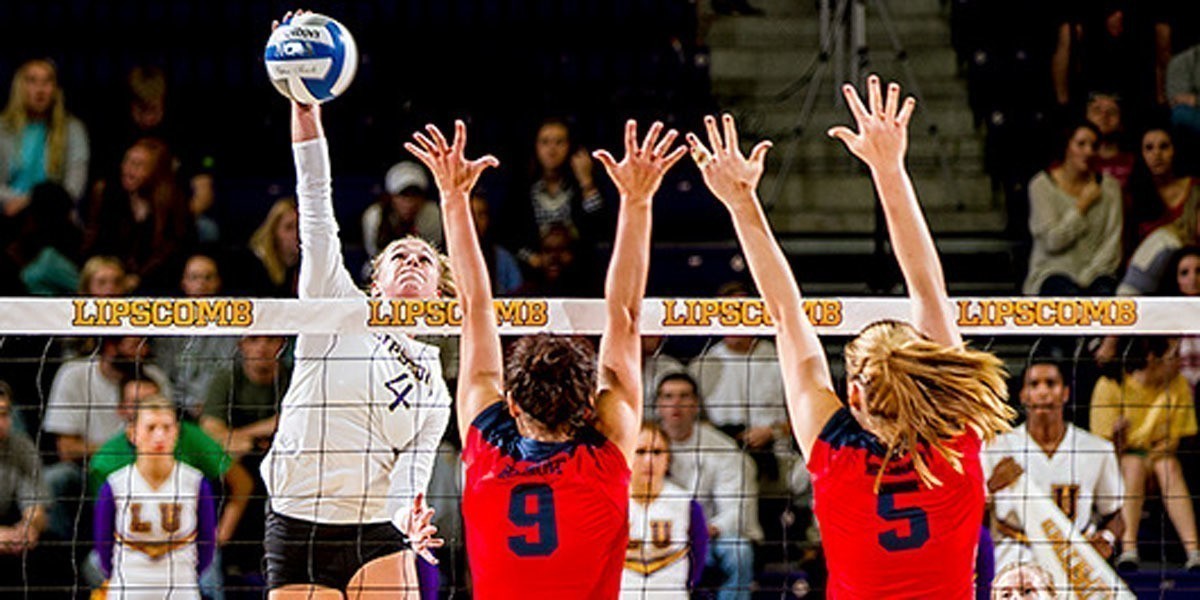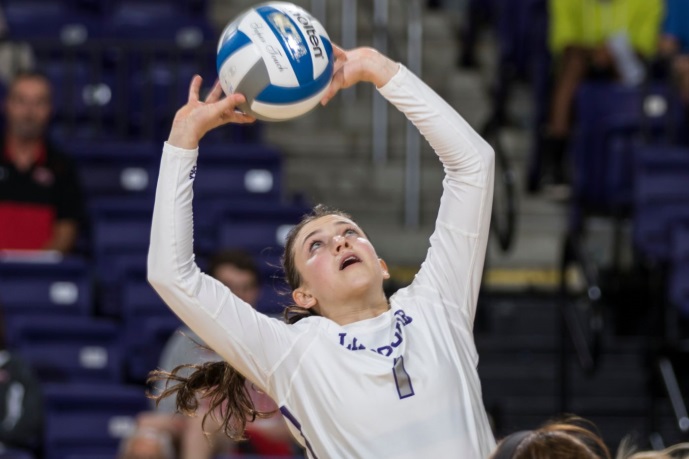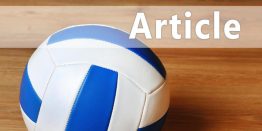| Positional Training |
| By: Billy Ebel - Associate Head Coach - Lipscomb University
Originally Published in: Coaching Volleyball Provided by: AVCA As coaches we continue to maximize our limited criteria for practices. As teams are starting or ending spring/fall training, coaches have to focus a lot on positional training. We spend the first few weeks in 30 min sessions by position, four days a week. One of the positional sessions we would split them up individually and for the second 30 min session we would do combined small group training. I am going to walk you through certain drills by position that will maximize your training during the season. SETTERS We spend a lot of time one-on-one with our setters. I feel positional training with setters is extremely important. I have heard this from one of my mentors: "We are only as good as our setter". That has a lot of truth; we want to challenge our setters to be the best on the court. If you have a team of great attackers and an average setter, you may struggle more often than not. If you have average attackers and a great setter, I would take that team over the other. MIDDLES We can all agree middles have it the toughest when it comes to positional training especially when your numbers are low in the spring. We continue to stress with our middles three important skills: blocking, transition and attacking versatility. We begin a lot of the positional training with footwork for blocking and transition. We believe that muscle memory plays a large factor when it comes to middles and transition. When we start the positional with blocking, we focus on independent hands. We would start with a “Block Progression.” This begins with footwork to either pin. We use pole pads on the ground to get our players to take a big first step and to cover some ground. We would then add coaches on boxes, positioned at either pin, holding two flat balls. We want our middles to focus on clearing the pole pad with the correct footwork and using their arms to swing block up and grab both the deflated volleyballs. We stress the importance of this with our pin hitters as well. As we progress, we would add live attacked balls. We would love to have our middles block with independent hands, we focus on one shot at a time and having them take away that space with one hand. As we continue, we would then go into a full swing blocking movement and maybe even add a setter for them to read. The next drill we use quite often is “two ball training.” We would position the middles in serve receive patterns; we would ask them to run two different sets back to back. If the middles are starting in rotation 3, we would ask them to run a slide and then come back around to a push. You can either toss these balls or have a setter work on her connection with the middles. We challenge our middles to be up quick and to work on different shots. OUTSIDES / RIGHT SIDES When we are training our pins hitters we are constantly talking about three areas of skills: first ball contact, attacking and defense. When we are going through training we always begin with "Passing School." We start by doing a passing progression on boxes, we have the girls sit on the boxes, and we stress the importance of angles and dropping your shoulder to get the ball to target. We like to do this stationary to give them more direct feedback instantly. We position the boxes on different areas on the court to give them a better look at the angles and challenge them to pass tough balls to target. We would start on the boxes and then move to stationary passing with no boxes. We start to move them from side to side off a coach toss to get them passing the ball along their midline. We slowly work towards going to a live serve to get them tons of reps off a serve receive and put the focus on certain situations. One day we would work on scheme balls, and the next would be short balls. We try to give them plenty of variation to makes sure they see an abundance of different serves. We would then move to attacking or defense at this point. For the attacking segment of practice, we really stress ball control and hand contact. We want our players to have the ability to hit any kind of set and also have the ability to adjust to different types of balls. We work on this skill by doing a drill called "OOS" (Out of System). We would have a player in middle back, coaches would attack balls to the defensive player, who would then dig to self then set one of the pins hitters. We challenge our attackers to be disciplined and able to adjust to a non-setter second contact. We would then push our outsides and rightsides to make certain shots on the court. We have seen a lot of progress with this drills especially since a lot of volleyball is out of system. LIBEROS One of the most valued positions on the court would have to be the Libero position. It is so important to have a well-rounded player at this position. I love to push these players to the absolute limit. We begin a lot of our individual sessions with defense and floor moves. Our players always know when I send out the text "Bring Sweats" they know it is going to be one of those days. We have a drill called "Cone Series." I position the cones in left, middle, right back; we have two shuffle cones and a sprint cone. We begin shuffling left to right once, and they immediately sprint forward on a read ball and go for a forward sprawl. I want our liberos to get comfortable getting on the ground but also having the knowledge of when to use these skills. I would add a ball to the forward sprawl ball and push the limit as to how far they can go to get it. I was pleasantly surprised as to how quickly our players got over the fear of diving on the ground. I want our liberos to be super dynamic on defense and have the ability to cover a lot of ground. The next defensive drill we use for our liberos would be "Two Ball Dig." We start by positioning boxes in left, right and middle front on the opposite side of the net. Coach initiated, the first ball goes directly to the player in any of the three positions; after that first ball is dug, there is an immediate second ball that is some sort of run through or chase ball. I want to emphasize this idea of being able to change direction but also having the ability to think fast and react to the ball. We would stay in this drill for up to a minute for each player and all of them going through up to five times. I love challenging our defensive players to push the limit every day. We make a lot of plays in our gym and I feel these types of drills directly impact our defensive success.
Positional training can be really beneficial to a team's success. We really emphasize the importance of spring/summer and tell our players that this is where we decide if we want to win another championship. If practice is thirty minutes or three hours; maximize your training by challenging your players to get better at their position and to take responsibility for improving each day. Continue to push your players to get 1% better every practice, but as coaches we have the ability to push our teams to the next level with an efficiently ran practice or positional training. |





 When we train our setters, we continue to train game like situations. We spend a lot of time on speed of our hands, location and footwork. We warm up with a drill called "Self Toss." I want our setters to enter in from any serve receive rotation, they toss their ball to target, get squared up, set to self and then jump set the "Go" or any other set by coach discretion. I am looking for them to be in a neutral position, high hands and good energy through the ball on the release. We use this drill often to get them to focus on footwork and hand positioning. We would then move to setting off a pass, I find it so much more beneficial setting off a pass. We like to focus on reading the passers arms and anticipating the tempo and angle of the pass. We would have the pass coming from different locations on the court; we call this drill "Around the World." We start a lot in system and gradually move to out of system. We continue to push our setters to the limit; we challenge them in this drill to drive off one foot and to constantly square up to target. We want a strong sense of fluidity with their feet and hands. This drill can really improve a setter's depth perception and understanding where they set up on the court. Keep challenging your setters to get as many reps as possible outside of practice.
When we train our setters, we continue to train game like situations. We spend a lot of time on speed of our hands, location and footwork. We warm up with a drill called "Self Toss." I want our setters to enter in from any serve receive rotation, they toss their ball to target, get squared up, set to self and then jump set the "Go" or any other set by coach discretion. I am looking for them to be in a neutral position, high hands and good energy through the ball on the release. We use this drill often to get them to focus on footwork and hand positioning. We would then move to setting off a pass, I find it so much more beneficial setting off a pass. We like to focus on reading the passers arms and anticipating the tempo and angle of the pass. We would have the pass coming from different locations on the court; we call this drill "Around the World." We start a lot in system and gradually move to out of system. We continue to push our setters to the limit; we challenge them in this drill to drive off one foot and to constantly square up to target. We want a strong sense of fluidity with their feet and hands. This drill can really improve a setter's depth perception and understanding where they set up on the court. Keep challenging your setters to get as many reps as possible outside of practice.



